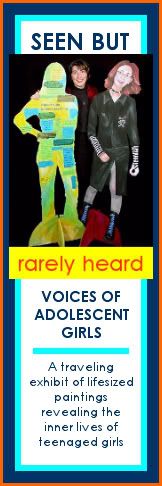
Here is William’s photograph of the story of Jesus visiting the home of his friends, Mary and Martha. It is the 5th picture in this “It’s in the Book” series depicting bible scenes in a modern context.
Luke 10:38-42
Now as they went on their way, he entered a certain village, where a woman named Martha welcomed him into her home. She had a sister named Mary, who sat at the Lord’s feet and listened to what he was saying. But Martha was distracted by her many tasks; so she came to him and asked, “Lord, do you not care that my sister has left me to do all the work by myself? Tell her then to help me.” But the Lord answered her, “Martha, Martha, you are worried and distracted by many things; there is need of only one thing. Mary has chosen the better part, which will not be taken away from her.”
At this point in his ministry, Jesus traveled with an entourage of disciples and other followers. It is likely that when he arrived at the home of Mary and Martha, there was a veritable mob with him. Hospitality in the ancient world was paramount, which explains Martha's push to get everyone fed. Yet Jesus ends up lauding not the busy sister, but the one who went against the cultural expectations in order to follow Christ and really learn from him.
This scene has been widely depicted in art. The following are examples.

Tintoretto, the great Renaissance painter completed this painting in 1575. This is one of the few examples where the artist includes characters other than Jesus, Mary and Martha. Though we know there must have been other people present, many artists simplify the scene down to the principle players in order to have greater visual impact. Here, Tintoretto diminished the importance of these other characters by placing them in the background. Both Mary and Martha wear finery which is much more from the time of Tintoretto than of biblical times. He has done so to place them in his own context. Martha points to her sister with an accusatory finger. Yet Jesus’ focus is on Mary, thus showing how she has chosen the better part. Visually, our eyes are drawn to Mary since both Jesus and Martha put their attention on her. This is to show that she is the one from whom we can learn a valuable spiritual lesson.

This painting by Vincenzo Campi is called “Christ in the house of Mary and Martha” and yet we must search to even find the tiny Jesus and Mary in the upper left hand corner. It is a humorous portrayal of the scene because Martha is surrounded by a ridiculous amount of meat. Clearly, she was busy with many things. For her, there is only work—almost no presence of Christ. Perhaps that’s what the artist is helping us to understand by making Mary and her overwhelming mounds of meat so prevalent. The point is that when we get caught up with busy work, we cannot be aware to the presence of Christ with us and, tragically, we the important message.

This 17th century painting by Fleming Erasmus Quellinus shows an enlightened Mary (symbolized by her well-lit face and golden yellow clothing) listening intently to Jesus. Martha is further from Christ as she prepares food. This distance is also symbolic, showing how her work keeps her heart further from Christ than her sister’s. We only see her back side—the artist does this to show how unimportant she is. Only Mary is worthy of our full attention.

This painting from 1628 is by Peter Paul Reubens. Here Mary and Martha sit outside their home. The landscape is not that of the ancient Middle East but instead, a very European setting. This was Reubens’ way of placing the scene in his context. Martha points at her sister with disdain. Jesus points at her too, because he is explaining how her choice was better. The heads of these three figures form a line taking our eye from left to right, as well as from the top to the bottom. In the end, our focus is upon Mary who sits humbly in her golden yellow dress at the feet of Jesus. Again, the artist wants us to focus upon this character.

Vermeer completed this painting around 1655. As with many others, the characters are limited to Jesus, Mary and Martha. In Vermeer’s version, the Martha character is less angry. She looks more tired and weary—her hands cumbered by a tray of food. Her expression makes it look like she is begging Jesus for help. And he does give her help by pointing out Mary to her. This humble woman sitting at his feet has chosen the better part.

Maurice Denis painted this Mary and Martha scene in1896. Not only has he simplified the scene by eliminating the extraneous characters, he has also eliminated their faces—allowing their costumes and body language to convey the story. Christ and Mary are dressed in white to show their spiritual enlightenment. Meanwhile, Martha stands further away with her signature tray of food. She is dressed in black to show her understanding of Christ and his message are still in the dark. By painting Christ and Mary without unique faces, it also gives the viewer a sense of how the two of them are at one because she has allowed herself to truly learn from the master.

This painting comes from an African artists consortium called Jesus Mafa. The artist has enculturated the scene by setting it in an African village with African characters. Martha’s spiritual distance from Jesus is demonstrated by her physical distance from him. Mary sits close because she understands him. Because Jesus’ back is to us, it seems that Mary becomes the most important figure in the painting.







No comments:
Post a Comment